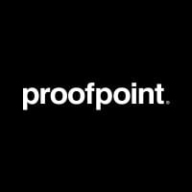

Proofpoint Insider Threat Management and Splunk User Behavior Analytics compete in threat management and user behavior analysis. Splunk appears to have the upper hand with its advanced data analytics capabilities, catering to organizations seeking in-depth analytical insights despite higher costs.
Features: Proofpoint Insider Threat Management offers real-time alerts, comprehensive activity monitoring, and risk scoring for pinpointing insider threats. Splunk User Behavior Analytics features robust data analytics, machine learning-driven threat detection, and integration with broader security ecosystems.
Room for Improvement: Proofpoint could enhance its integration with third-party applications and improve user interface customization. Additionally, expanding analytics capabilities would be advantageous. Splunk could streamline deployment processes, introduce more intuitive reporting tools, and optimize cost efficiency for scalability.
Ease of Deployment and Customer Service: Proofpoint integrates seamlessly with existing security frameworks and offers dedicated support for smooth operational transitions. Splunk requires substantial customization and integration time, supported by comprehensive customer service to manage the complex setup efficiently.
Pricing and ROI: Proofpoint provides a cost-effective entry point offering quick ROI due to straightforward integration. Conversely, Splunk justifies its higher initial costs with advanced analytics features, promising long-term returns for data-centric organizations.

Proofpoint Insider Threat Management offers comprehensive insights into internal risks, emphasizing detection and response to insider threats effectively.
Proofpoint Insider Threat Management provides a robust platform for identifying, managing, and mitigating internal security threats within organizations. It leverages analytics to monitor user activities and detect anomalies that might signify potential threats. Users benefit from enhanced visibility into internal systems and processes, which strengthens their information security protocols. By focusing on insider threats, it helps organizations safeguard sensitive data and maintain compliance with industry regulations.
What are the key features of Proofpoint Insider Threat Management?
What benefits and ROI come from using Proofpoint Insider Threat Management?
Many industries implement Proofpoint Insider Threat Management to protect sensitive information and comply with regulatory standards. It is particularly beneficial in sectors such as finance and healthcare, where data security is critical. By integrating it with their current infrastructure, organizations can effectively track and manage insider threats, ensuring data is handled securely and responsibly.
Splunk User Behavior Analytics is a behavior-based threat detection is based on machine learning methodologies that require no signatures or human analysis, enabling multi-entity behavior profiling and peer group analytics for users, devices, service accounts and applications. It detects insider threats and external attacks using out-of-the-box purpose-built that helps organizations find known, unknown and hidden threats, but extensible unsupervised machine learning (ML) algorithms, provides context around the threat via ML driven anomaly correlation and visual mapping of stitched anomalies over various phases of the attack lifecycle (Kill-Chain View). It uses a data science driven approach that produces actionable results with risk ratings and supporting evidence that increases SOC efficiency and supports bi-directional integration with Splunk Enterprise for data ingestion and correlation and with Splunk Enterprise Security for incident scoping, workflow management and automated response. The result is automated, accurate threat and anomaly detection.
We monitor all User Entity Behavior Analytics (UEBA) reviews to prevent fraudulent reviews and keep review quality high. We do not post reviews by company employees or direct competitors. We validate each review for authenticity via cross-reference with LinkedIn, and personal follow-up with the reviewer when necessary.